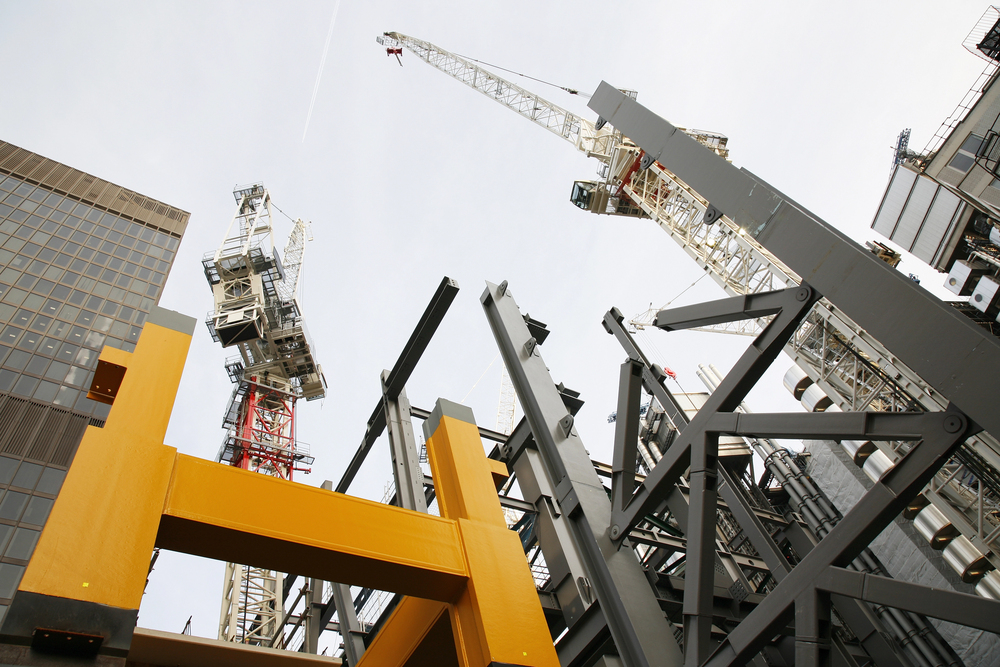Corrections Center: 2018 P-C Market Forecast

By: Joseph Peiser
Then, we began wondering if we were wrong. Maybe the fundamental economics of insurance would continue to attract capital and the steady rise in supply would continue to outstrip demand, and downward pressure on rates would persist indefinitely.
Or maybe the mega losses wouldn’t be big enough. Maybe the insurance cycle was indeed a relic of the past.
Well, we’ve got some big losses now—Harvey, Irma and Maria. We can’t help but wonder if we might see some answers to those questions we’ve been asking for several years.
In the wake of a heavy cat year, here are the top 10:
1) How big a loss will the industry face? The growing consensus is that the total will exceed $100 billion. That’s a serious blow to the industry. It’s hard to imagine that such a blow will not impact rates.
2) Will property rates go up? Yes, we expect rates to go up. For insureds with direct hurricane exposures, the losses could be steep. Others could see small increases. The long soft market for commercial property insurance could be over, at least temporarily.
3) Will it extend and will it last? In other words, will the market turn? This is the big-picture question, and it’s impossible to say. The answer will likely depend on the answers that emerge to some of the questions that follow.
4) Will other lines be affected? Unclear. Insurers booking heavy losses will likely be under pressure to make up the outflow and may look to do so via non-property premiums.
Many industry observers have pointed out that the profitability of property insurance has masked loss deterioration in other lines of business—even when rates are declining, relatively modest catastrophic losses have still translated into profit. With that mask gone, some will seek increases in other lines. Competition may keep that in check, but we would not be surprised if the days of rate decreases are over—at least for a while.
5) Will insurers be able to pass along increases from reinsurers? Insurers will try. Reinsurers have seen rates tumble for an extended period and now face another blow. They could well be on the hook for a large portion of the $100 billion in losses, which should put the brakes on reinsurance price reductions and likely reverse them, leading to increases.
Will the increases hold? Unknown. But if they transpire as we expect, they will put insurers under further pressure to raise their own rates.
6) How will investors react? Insurers will be hit—in many cases, hard. But for most, we expect it will be an earnings event and not a balance sheet or capital event. The heavily regulated insurance industry has been reporting record policyholder surpluses for several years. These surpluses surpass $700 billion, and while $100 billion is a very noticeable chunk, it’s still only a fraction. Claims will be paid and insurers will live to underwrite another day.
As for investor reaction, the usual pattern has held so far: Just after the storms hit, investors, fearing the worst, pull back. Stock prices fall, but then quickly recover, and in anticipation of possible rate increases often push that recovery into positive territory.
The long-term picture, however, may take on a different hue. Appreciation of the extent of the potential loss may over time have an impact on the way the industry is perceived, although we have seen little sign of it yet.
7) Will the influx of alternative capital be affected? One of the key driving forces in the industry today is the influx of capital in various forms, creating an increase in supply that has exceeded demand and kept prices down. This terrifying windstorm season may give pause to the flow of capital. On the other hand, the prospect of rising rates may encourage fresh capital unaffected by the 2017 hurricane season.
Or, if this triple hurricane event does not have a significant impact beyond a modest uptick in property rates for those with relevant exposures—if the recent pattern of resiliency that has sustained a soft market for upwards of a decade remains—perhaps the insurance industry will lose some of its luster for a different reason. Instead of appearing riskier, it may appear flat and less appealing to capital in search of profit. But this is only conjecture—that trend would take time to develop.
8) Do we have our modeling act together? Predicting losses before the damage can be fully assessed is never easy and estimates will vary, sometimes considerably. The range in loss estimates for Maria, however, has been staggering. The low estimate from one modeler is higher than the high estimate from another.
Further, these hurricanes broke records—for rainfall in the case of Harvey, and intensity in the case of Irma, though that intensity had mercifully subsided somewhat by landfall. Just as the triple play of Katrina, Rita and Wilma sent modelers back to the drawing board in 2005, 2017’s trio will have a similar impact.
9) Will some unflattering claims adjusting stories put a stain on the industry? In the aftermath of a disaster, incredible effort is expended to get claims settled and let insurance do what it does: act as a foundation for recovery. The working of this machinery, remarkable as it is, is not usually newsworthy until something goes wrong. Hurricane losses are especially prone to disagreement given the necessity of sorting out the roles played by flood versus wind in creating the losses, as well as the definitions regarding each in the relevant insurance policies. Fair or not, the industry often suffers some bad PR when claims adjusting conflicts come to light.
10) What should buyers expect as renewals approach? The most basic and sound insurance advice is simple: Hope for the best, prepare for the worst. In an era of rising intensity in weather disasters, we might rephrase it: Prepare for the inevitable, hope for some respite.
The insurance industry, when all is said and done, will almost certainly prove again to be a bulwark of resilience. But the marketplace is going to react, and buyers need to be ready. No one should expect the status quo.
Breaking the News
In 2018, the broad impact of 2017’s mega losses will play a role in pricing. But at the same time, many specialty lines of insurance will go their own way, following their own supply and demand curves [see sidebar].
Property rates—those impacted most directly by the recent hurricane onslaught—moved from predicted decreases to increases across the board. For 13 of the lines we survey, predictions are unchanged from last spring; however, upward pressure is evident in seven lines—including casualty, where 2017 forecasts for small decreases have been replaced by predictions of small increases. For most commercial clients, the insurance spend in 2018 will be on the rise.
In the property market, we expect to see some type of market correction after insurers have a chance to estimate their ultimate losses. However, the pricing impact to buyers will likely not manifest until the first or second quarter of 2018.
Forecasting price still involves a high degree of uncertainty, but rates are expected to potentially rise 10-20% for catastrophe-exposed risks and 20-25% for catastrophe-exposed risks with recent losses. Other property insurance buyers can expect flat rates or low single-digit increases, ending what for many buyers have been several consecutive years of annual decreases. Meanwhile, several factors could dampen the upward pressure on rates, including still-abundant capacity and what experts view as “still eager” alternative capital providers.
Casualty rates, which had begun to drift downward for many organizations, are predicted to be flat or increase by small amounts as pressure from the recent catastrophe losses spills over into other lines of business. Auto rates for businesses will maintain single-digit increases, while workers compensation rates are expected to be stable, moving one or two percentage points in either a positive or negative direction. For product recall, we predict rates to range from –5% to +5%.
The directors & officers liability marketplace outlook is not as soft, as underwriters who are mindful of potentially adverse D&O claims activity seek ways to avoid compounding the year-over-year impact of declining rate. For terrorism insurance, buyers should expect flat renewals rather than the decreases they have seen in recent renewals. Meanwhile, in the environmental insurance market, the high double-digit increases for combined environmental casualty programs have begun to ease.
The cyber liability insurance market remains robust, with increased competition buoying market conditions. Demand for coverage continues to rise, and supply of capacity is more than keeping up. Despite a string of high-profile breaches, cyber insurance program renewals for both primary and excess cover are averaging only single-digit rate increases. Underwriters have offered premium decreases to organizations that are able to demonstrate increased levels of security and internal policy controls. Experts forecast rate increases of up to 5% for 2018.
The big overall question for 2018 price prognosticators: How long will the upward pressure last?
Many who work in the industry today have not witnessed a market correction. Now is the time to seek out experienced hands while using the most up-to-date tools at your disposal. Both will be invaluable in the days ahead.
Joseph Peiser is head of broking for Willis Towers Watson North America and senior editor of the Marketplace Realities report.
Rate ForecastFor 2018, seven lines are expected to see price increases: ■ Auto ■ Casualty ■ Employment practices liability ■ Errors & omissions ■ Marine ■ Property ■ Trade credit Seven lines are expecting decreases: ■ Aviation, with small increase for some airlines ■ Directors & officers ■ Environmental, with small increases for combined casualty policies ■ Health care professional ■ International ■ Political risks ■ Terrorism (flat for many buyers, including tier-1 risks) Nine lines are predicted to deliver a mix of small increases and decreases or flat rates: ■ Cyber ■ Construction ■ Energy ■ Fidelity ■ Fiduciary ■ Kidnap & ransom ■ Product recall ■ Surety ■ Workers compensation —J.P. |










